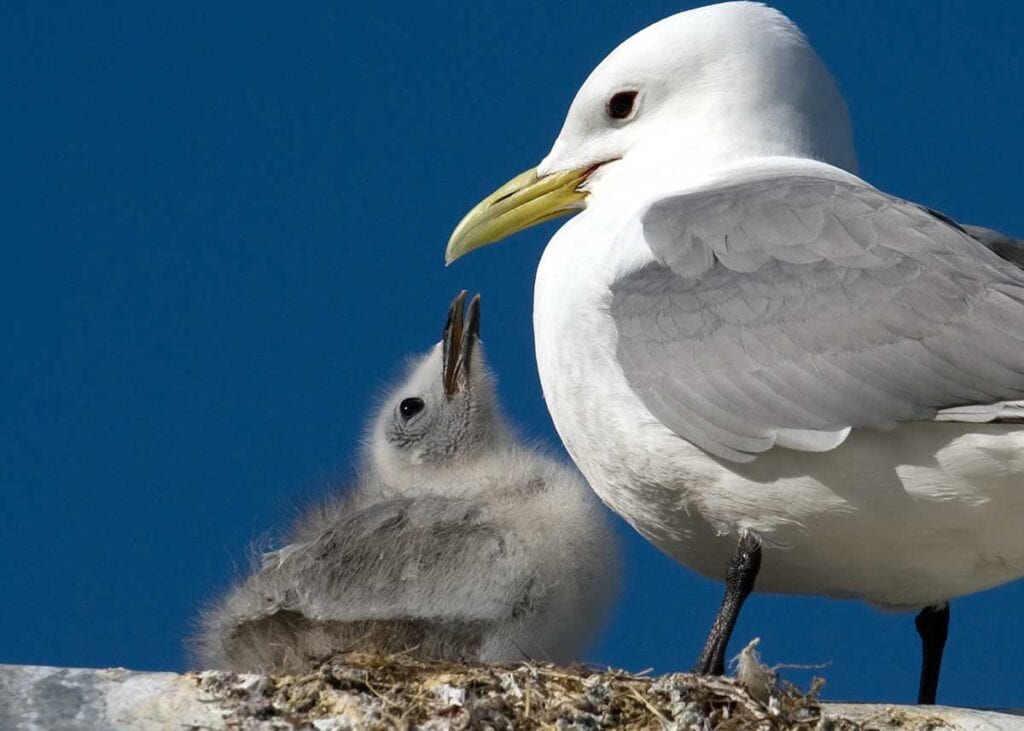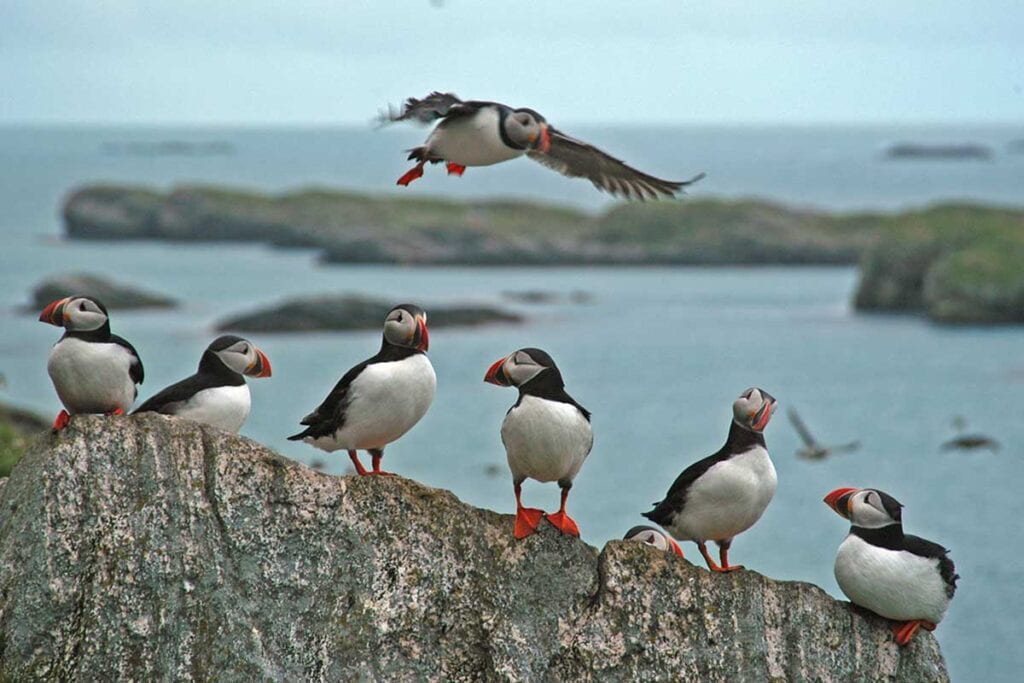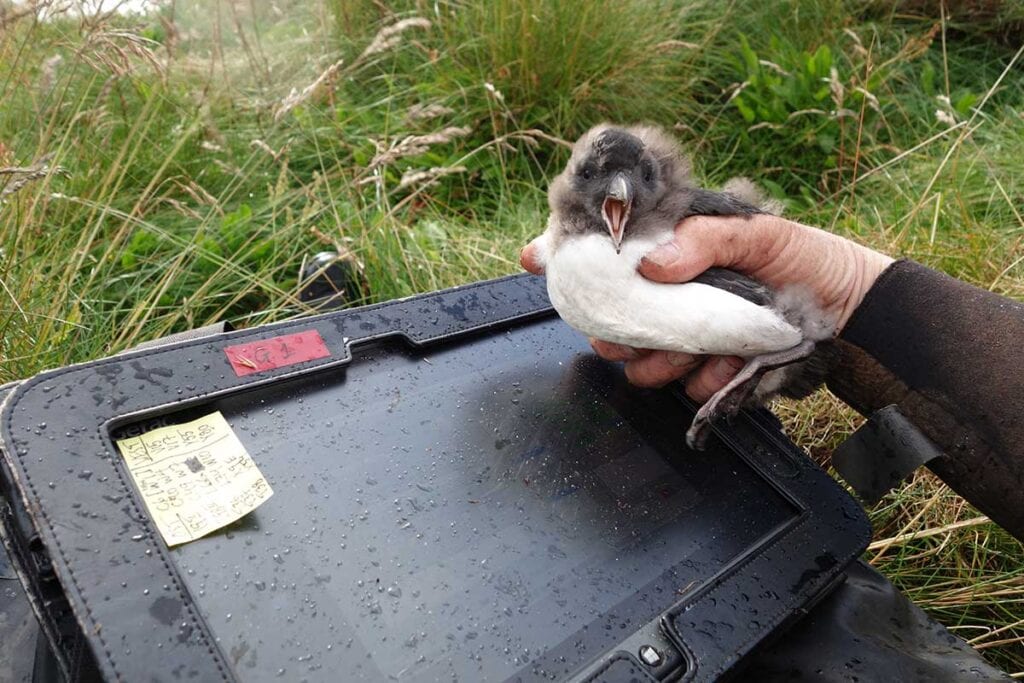Seabirds ring the alarm
Changes in seabird breeding productivity reflect hemispheric differences in ocean warming and human use, and call out the need for policies that reduce the impacts of climate change on the world’s marine ecosystems.
First published by the Norwegian Institute for Nature Research (NINA)
The ocean is under severe pressure
Human activities affect ecosystems both directly and indirectly through anthropogenic climate change. The effects are however not evenly distributed across the globe. The northern hemisphere is warming faster than its southern counterpart, and the marine ecosystems respond accordingly.
Researchers from every corner of the world have joined forces and analyzed long-term monitoring data from 66 seabird species, spanning a period of more than 50 years. The study, published in Science on 28 May 2021, reveals that the asymmetry in sea temperature changes is reflected in the breeding success of seabirds. This makes seabirds an overarching and cost-efficient metric to assess marine ecosystem change, providing important insights for ecosystem monitoring and management.
“Our findings illustrate the critical role that seabirds play as sentinels of global marine change, and highlights the need for policies that reduce climate change impacts on the world’s marine ecosystems”, says William Sydeman, lead author and Chief Scientist at the Farallon Institute in California.
Poor prospects for seabirds in the north
The study found that fish-eating, surface-feeding seabirds in the northern hemisphere are most affected by ecosystem changes. And the prospects for many of the species are poor unless food access improves. In seabirds feeding on plankton, and in species in the southern hemisphere in general, breeding success was more stable during the same time span.
“Seabirds respond quickly to changes in their environment. By monitoring breeding success, we can detect important changes in the marine environments that are otherwise difficult to quantify directly”, says Tycho Anker-Nilssen, Senior Research Scientist at the Norwegian Institute for Nature Research (NINA), and in charge of the seabird monitoring at Røst.
Previous studies have proved that seabirds respond similarly to scarcity of prey, regardless of where they live and what they eat. When food availability falls below a critical level, breeding succes is reduced significantly. Above this level, the number of chicks is unaffected.
Commercial fisheries targeting small pelagic fish or large zooplankton compete with seabirds for limited food resources. Time-area fisheries closures may be an effective strategy for improving seabird productivity in the northern hemisphere.
The authors suggest establishment of large marine protected areas as a means to enhance seabird foraging opportunities and mitigating impending human impacts. This also applies to the southern hemisphere, although the situation is less urgent there.
The importance of long-term monitoring
Long-term monitoring is probably the best available method to acquire knowledge on the complexity of marine ecosystems, and essential for monitoring the health of the oceans. Global monitoring of seabird productivity enables detection of ecosystem change and contributes to understanding climate impacts on marine ecosystems.
We now have a large number of monitoring sites within SEAPOP, but building data series that can reflect the long-term variations in marine environments takes time. Many of these studies were initiated for other reasons, but maintained because of the drastic changes they documented for an increasing number of seabird species and colonies.
This new study adds to a growing list of analyses illustrating the strength of our longest time series. Those series that managed to continue through many decades of shifting funding regimes now constitute our most valuable data sets for exploring the key drivers of change in seabird populations and how these are linked to variations in their main food chains. The long time series are therefore also the key to predicting the future and enabling us to take important measures in time.
“Such studies are of critical importance in the continued quest for a more ecosystem-based management of our marine resources”, Anker-Nilssen concludes.



Contact person: Tycho Anker-Nilssen, NINA
